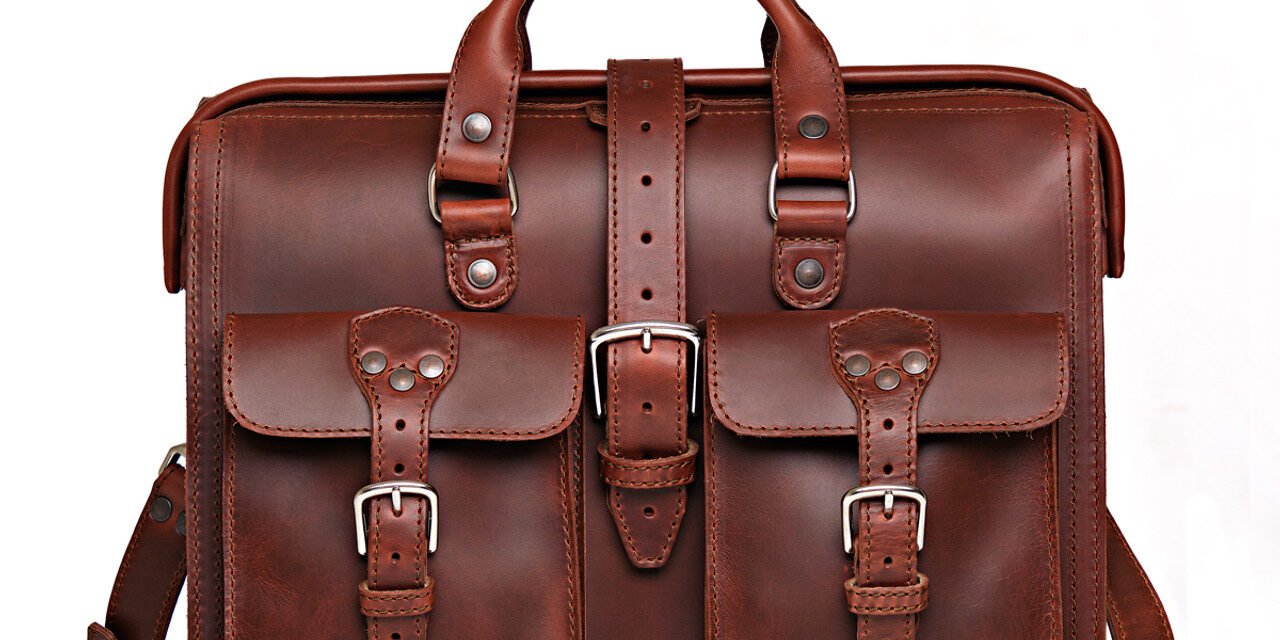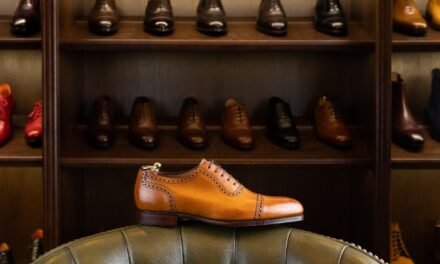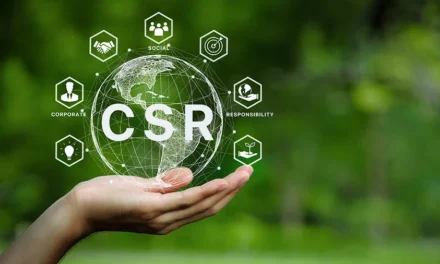The manufacturing of leather briefcases, portfolios, and laptop bags involves a combination of high-quality materials that ensure durability, functionality, and aesthetic appeal. These materials are carefully chosen to meet structural requirements, customer preferences, and market trends. Below are the key materials used:
1. Leather
Leather is the primary material used in the production of briefcases, portfolios, and laptop bags. Different types of leather are selected based on the desired quality, finish, and price point:
- Full-Grain Leather
- The highest quality leather, derived from the top layer of the hide.
- Known for its strength, natural grain, and durability. It develops a rich patina over time.
- Preferred for premium or luxury products.
- Top-Grain Leather
- A slightly processed version of full-grain leather where the surface is sandpapered to remove imperfections.
- Provides a more uniform appearance while maintaining good durability.
- Widely used for high-end business bags and laptop cases.
- Genuine Leather
- Lower-grade leather derived from the layers below top grain.
- More affordable but less durable compared to full-grain or top-grain leather.
- Commonly used in mid-range briefcases and portfolios.
- Vegetable-Tanned Leather
- Tanned using natural tannins (e.g., tree bark or plant extracts).
- Eco-friendly and develops a unique natural finish over time.
- Popular for premium products and sustainable leather goods.
- Chrome-Tanned Leather
- Tanned using chromium salts, making it more water-resistant and pliable.
- Ideal for briefcases and bags that require a smooth, consistent finish.
- PU-Coated Leather / Split Leather
- Lower layers of hides are coated with polyurethane (PU) for a more uniform and affordable alternative.
- Often used for budget-friendly leather products.
2. Linings
The interior lining of a leather briefcase, portfolio, or laptop bag provides protection for the contents and improves the bag’s aesthetic:
- Fabric Linings
- Cotton, polyester, or a cotton-poly blend are commonly used for their lightweight nature and durability.
- Cotton linings are often used for luxury bags, while polyester provides water resistance for everyday use.
- Microfiber
- Soft, synthetic material that is durable and smooth.
- Often used in laptop compartments to protect electronic devices from scratches.
- Suede or Soft Leather Linings
- Premium bags often feature suede or soft leather as interior lining, offering a luxurious feel.
3. Hardware
High-quality hardware is critical for functionality, durability, and design in leather bags:
- Zippers
- YKK zippers are industry-standard for durability and smooth functionality.
- High-quality metal zippers are preferred over plastic for their sturdiness.
- Buckles, Clasps, and Locks
- Usually made of brass, stainless steel, or zinc alloy.
- Used for adjustable straps, locks on briefcases, and closures on portfolios.
- Handles and D-rings
- Handles are reinforced with leather or padding for comfort.
- D-rings made of metal support the attachment of shoulder straps.
- Rivets and Studs
- Reinforce stress points where handles and straps attach to the bag.
4. Padding and Protective Materials
For briefcases and laptop bags, padding is essential to protect devices and contents from impact:
- Foam Padding
- High-density EVA foam or closed-cell foam is used in laptop compartments to cushion electronics.
- Lightweight and durable, foam offers excellent shock absorption.
- Polyurethane (PU) Padding
- Provides a soft, flexible layer inside compartments.
- Hard Boards
- Thin layers of reinforced cardboard, fiberboard, or plastic panels are used to maintain the structure of the bag.
5. Stitching and Thread
The stitching determines the strength and longevity of leather bags:
- Nylon or Polyester Thread
- Durable, resistant to wear, and available in various colors for aesthetic contrast.
- Used in most commercial leather bags.
- Waxed Thread
- Often used for hand-stitched leather goods to ensure greater strength and resistance to moisture.
6. Straps and Reinforcements
- Leather Straps
- Often made from full-grain or top-grain leather for durability. Reinforced with additional stitching.
- Webbing or Nylon Straps
- Used as shoulder straps for their strength and lightweight properties.
- Some manufacturers incorporate adjustable padded sections for comfort.
7. Additional Materials
- Foils and Logos
- Embossed leather logos or metal badges are added for branding.
- Velcro and Magnetic Closures
- Used for quick access pockets or internal compartments.
- Water-Resistant Coatings
- A thin layer of wax or waterproof spray is applied to leather products to improve water resistance, protecting the bag from light rain.
8. Eco-Friendly and Alternative Materials
The industry has been moving toward sustainable materials for environmentally conscious consumers:
- Vegetable-tanned leather: Reduces chemical use during processing.
- Recycled materials: Some manufacturers use recycled leather fibers combined with natural latex to create composite leather.
- Plant-based leather alternatives: Materials like mushroom leather, cactus leather, and pineapple leather (Piñatex) are emerging as sustainable options.
Conclusion
The production of leather briefcases, portfolios, and laptop bags in regions like Panapakkam uses a combination of high-quality leathers, durable hardware, and supportive materials like foam padding and reinforced linings. This blend of premium components ensures that these bags are durable, functional, and suitable for professional and luxury markets. The increasing adoption of sustainable materials like vegetable-tanned leather and plant-based alternatives reflects growing demand for eco-friendly products in the global leather goods industry.
Hashtags
#HandmadeLeather #ArtisanalCraftsmanship #EcoFriendlyLeather #TimelessDesigns #FunctionalFashion #LeatherAccessories #LeatherLovers #LeatherObsessed #LeatherAddict #LeatherStyle #LeatherLife #LeatherCommunity #LeatherArt #LeatherInspiration #LeatherPassion #LeatherPerfection #LeatherGoals







